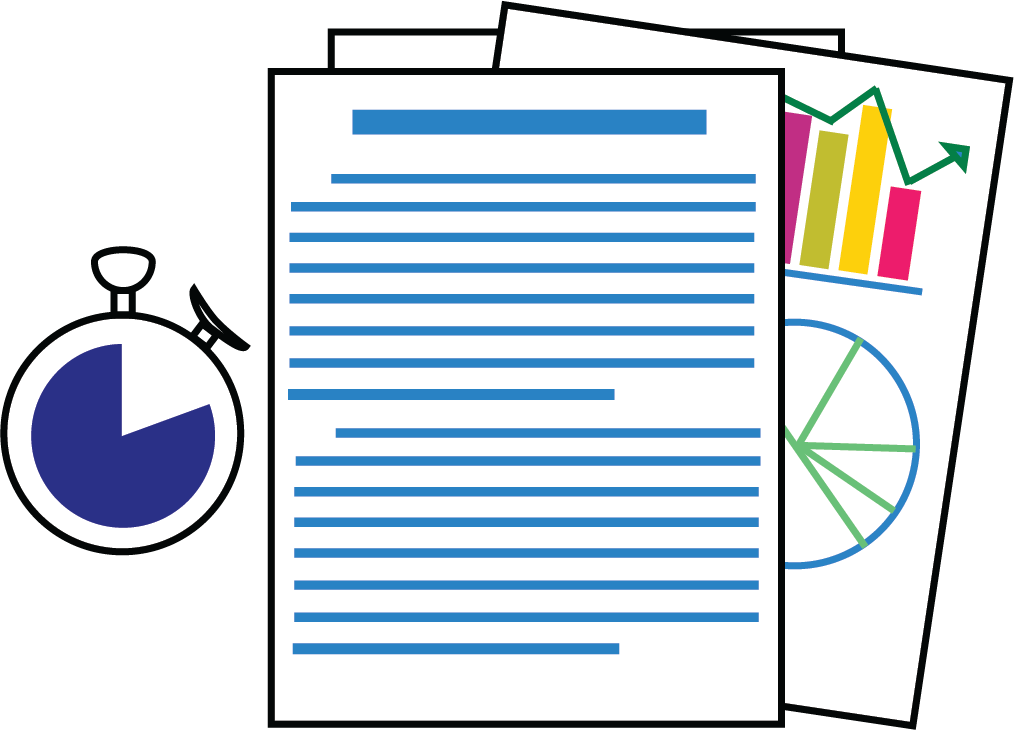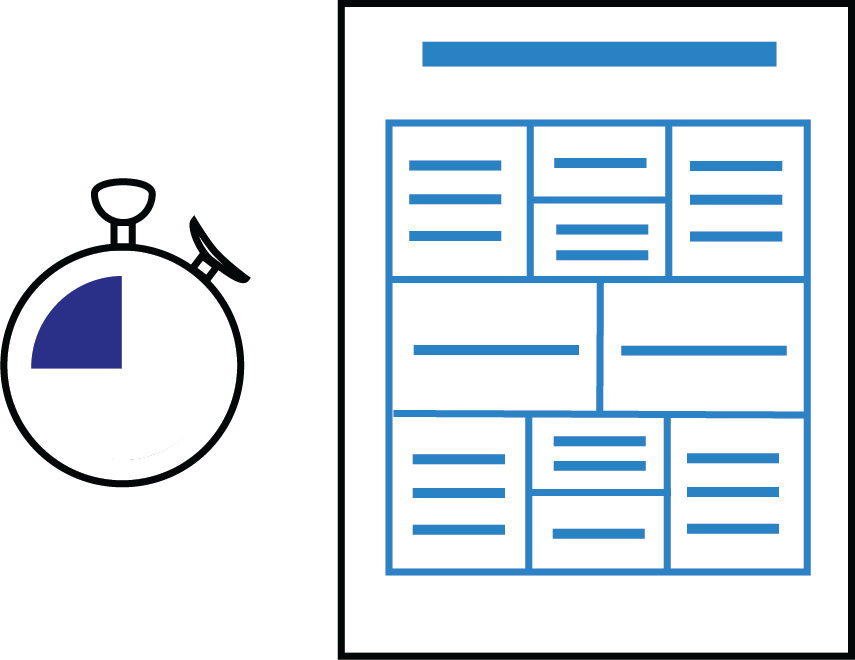. The CARES Act contains special provisions for those that obtain their SBA loan by September 2...
Writing A Business Plan
A business plan is the playbook of your company.
Business plans aid managing a business
A business plan will define each step of starting and structuring a business. Using the business plan as a resource to manage and grow a company is essential for a successful enterprise to complete the start-up phase as they think through the key elements of their business.
Business plans are critical for acquiring funding or bringing on business partners. A well written business plan will anticipate every contingency, emphasizing competent solutions that are sophisticated and practical. Investors want to feel confident they’ll see a return on their investment. Your business plan is the tool you’ll use to convince people that working with you — or investing in your company — is a smart choice.
Pick a business plan format that works for you
There’s no right or wrong way to write a business plan. What’s important is that your plan meets your needs.
Most business plans fall into one of two common categories: traditional or lean startup.
Traditional business plans are more common, use a standard structure, and encourage you to go into detail in each section. They tend to require more work upfront and can be dozens of pages long.
Lean startup business plans are less common but still use a standard structure. They focus on summarizing only the most important points of the key elements of your plan. They can take as little as one hour to make and are typically only one page.

Traditional Business plan
This type of plan is very detailed, takes more time to write, and is comprehensive. Lenders and investors commonly request this plan.

Lean startup plan
This type of plan is high-level focus, fast to write, and contains key elements only. Some lenders and investors may ask for more information.
Traditional business plan format
You might prefer a traditional business plan format if you’re very detail oriented, want a comprehensive plan, or plan to request financing from traditional sources.
When you write your business plan, you don’t have to stick to the exact business plan outline. Instead, use the sections that make the most sense for your business and your needs. Traditional business plans use some combination of these nine sections.
Executive summary
Briefly tell your reader what your company is and why it will be successful. Include your mission statement, your product or service, and basic information about your company’s leadership team, employees, and location. You should also include financial information and high-level growth plans if you plan to ask for financing.
Company description
Use your company description to provide detailed information about your company. Go into detail about the problems your business solves. Be specific, and list out the consumers, organization, or businesses your company plans to serve.
Explain the competitive advantages that will make your business a success. Are there experts on your team? Have you found the perfect location for your store? Your company description is the place to boast about your strengths.
Market analysis
You'll need a good understanding of your industry outlook and target market. Competitive research will show you what other businesses are doing and what their strengths are. In your market research, look for trends and themes. What do successful competitors do? Why does it work? Can you do it better? Now's the time to answer these questions.
Organization and management
Tell your reader how your company will be structured and who will run it.
Describe the legal structure of your business. State whether you have or intend to incorporate your business as a C or an S corporation, form a general or limited partnership, or if you're a sole proprietor or LLC.
Use an organizational chart to lay out who's in charge of what in your company. Show how each person's unique experience will contribute to the success of your venture. Consider including resumes and CVs of key members of your team.
Service or product line
Describe what you sell or what service you offer. Explain how it benefits your customers and what the product lifecycle looks like. Share your plans for intellectual property, like copyright or patent filings. If you're doing research and development for your service or product, explain it in detail.
Marketing and sales
There's no single way to approach a marketing strategy. Your strategy should evolve and change to fit your unique needs.
Your goal in this section is to describe how you'll attract and retain customers. You'll also describe how a sale will actually happen. You'll refer to this section later when you make financial projections, so make sure to thoroughly describe your complete marketing and sales strategies.
Funding request
If you're asking for funding, this is where you'll outline your funding requirements. Your goal is to clearly explain how much funding you’ll need over the next five years and what you'll use it for.
Specify whether you want debt or equity, the terms you'd like applied, and the length of time your request will cover. Give a detailed description of how you'll use your funds. Specify if you need funds to buy equipment or materials, pay salaries, or cover specific bills until revenue increases. Always include a description of your future strategic financial plans, like paying off debt or selling your business.
Financial projections
Supplement your funding request with financial projections. Your goal is to convince the reader that your business is stable and will be a financial success.
If your business is already established, include income statements, balance sheets, and cash flow statements for the last three to five years. If you have other collateral you could put against a loan, make sure to list it now.
Provide a prospective financial outlook for the next five years. Include forecasted income statements, balance sheets, cash flow statements, and capital expenditure budgets. For the first year, be even more specific and use quarterly — or even monthly — projections. Make sure to clearly explain your projections, and match them to your funding requests.
This is a great place to use graphs and charts to tell the financial story of your business.
Appendix
Use your appendix to provide supporting documents or other materials that were specially requested. Common items to include are credit histories, resumes, product pictures, letters of reference, licenses, permits, or patents, legal documents, and other contracts.
Lean startup format
You might prefer a lean startup format if you want to explain or start your business quickly, your business is relatively simple, or you plan to regularly change and refine your business plan.
Lean startup formats are charts that use only a handful of elements to describe your company’s value proposition, infrastructure, customers, and finances. They’re useful for visualizing tradeoffs and fundamental facts about your company.
There are many versions of lean startup templates, but one of the oldest and most well known is the Business Model Canvas, developed by Alex Osterwalder. You can search the web to find free templates of the Business Model Canvas, or other versions, to build your business plan.
We’ll discuss the nine components of the Business Model Canvas version here.
Key partnerships
Note the other businesses or services you’ll work with to run your business. Think about suppliers, manufacturers, subcontractors and similar strategic partners.
Key activities
List the ways your business will gain a competitive advantage. Highlight things like selling direct to consumers, or using technology to tap into the sharing economy.
Key resources
List any resource you’ll leverage to create value for your customer. Your most important assets could include staff, capital, or intellectual property. Don’t forget to leverage business resources that might be available to women, veterans, Native Americans, and HUBZone businesses.
Value proposition
Make a clear and compelling statement about the unique value your company brings to the market.
Customer relationships
Describe how customers will interact with your business. Is it automated or personal? In person or online? Think through the customer experience from start to finish.
Customer segments
Be specific when you name your target market. Your business won’t be for everybody, so it’s important to have a clear sense of who your business will serve.
Channels
List the most important ways you’ll talk to your customers. Most businesses use a mix of channels and optimize them over time.
Cost structure
Will your company focus on reducing cost or maximizing value? Define your strategy, then list the most significant costs you’ll face pursuing it.
Revenue streams
Explain how your company will actually make money. Some examples are direct sales, memberships fees, and selling advertising space. If your company has multiple revenue streams, list them all.
Recent Posts
-
CARES ACT – Now Is The Time To Buy a Business
. The CARES Act contains special provisions for... -
Did you know you can access your 401k/IRA tax and penalty free to buy or start a business? Call today to learn more
. 281-954-6023 FacebookTweetPinLinkedInEmail... -
ROBS Issues and SBA Financing.
A Discussion Following NAGGL Conference October... -
Are You Ready to Be the Boss?
Which are you – Manager – Leader or Both?... -
Franchise Or Business Start-Up?
Which is the right fit for you? Options and Opp...




Recent Comments